Texas Animals: Native Wildlife & Texas State Animals


What kinds of animals live in Texas? Texas is a huge state filled with amazing animal habitats, including hills, deserts, lakes, rivers, grasslands, and more.
One of the first things any Texas newcomer will notice is the incredible variety of invertebrate wildlife. Spiders, crustaceans, and insects are everywhere. The warm, humid climate in most of Texas, combined with all these easy food sources, makes it ideal for reptiles and amphibians, too.
Here are some of the most recognizable wild animals in Texas.
American Alligator
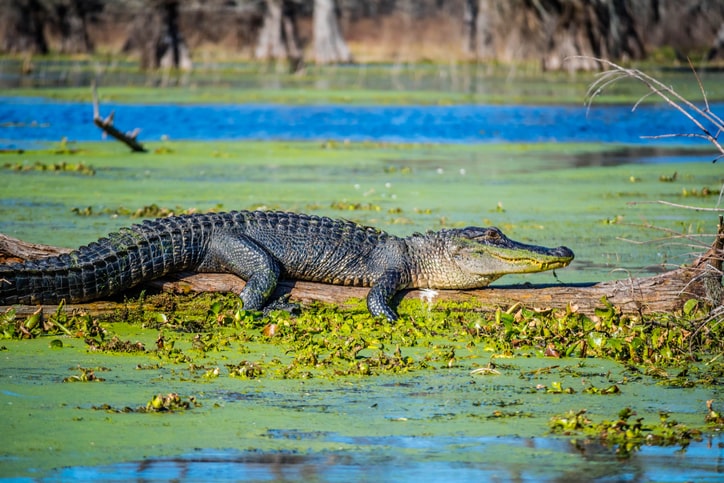
Scientific Name: Alligator Mississippiensis Habitat: Rivers, wetlands
Most Americans think of southeastern states like Florida when they picture alligators, but they’re not only native to Texas, but they’re also the state’s biggest native reptile. They prefer the east side of the state.
Alligators’ upper teeth are visible even when their mouths are closed. Full-grown males can be up to 11 feet long. Although alligators are apex carnivores that will eat just about any land or water animal they can catch, amazingly, nobody in Texas is known to have died from an alligator attack.
Brazos Bend State Park is a good location to visit alligators in their own habitat. It is home to an estimated 250 alligators.
Wild Boar
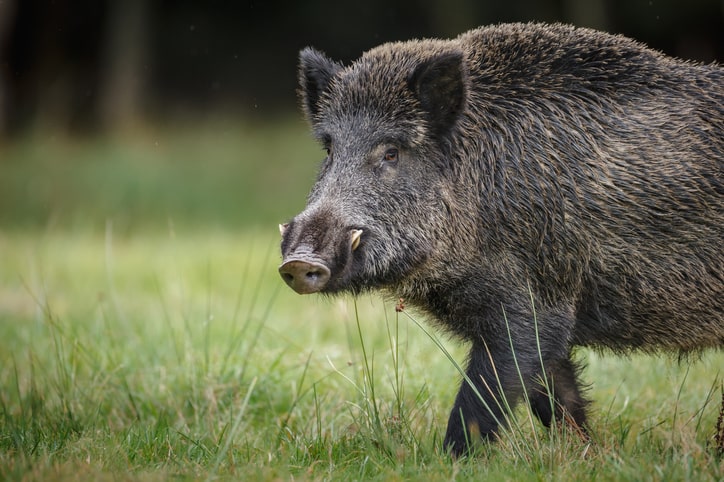
Scientific Name: Sus scrofa Habitat: Statewide, especially in agricultural areas
Wild hogs, feral pigs, razorbacks, whatever you might call them, wild boar are both instantly associated with Texas in the popular mindset and an invasive species. Famous for their belligerent nature and dangerous tusks, wild boar are not animals to tangle with lightly.
Originally imported from Europe as a food source during colonial explorations in the 15th and 16th centuries, they’ve been wreaking havoc across the American Southwest ever since. El Paso County is the only part of Texas believed to not have a wild pig population.
They are omnivores known to eat and damage farm crops, but will also consume insects and other invertebrates, scavenge carcasses, or kill live prey.
Badger
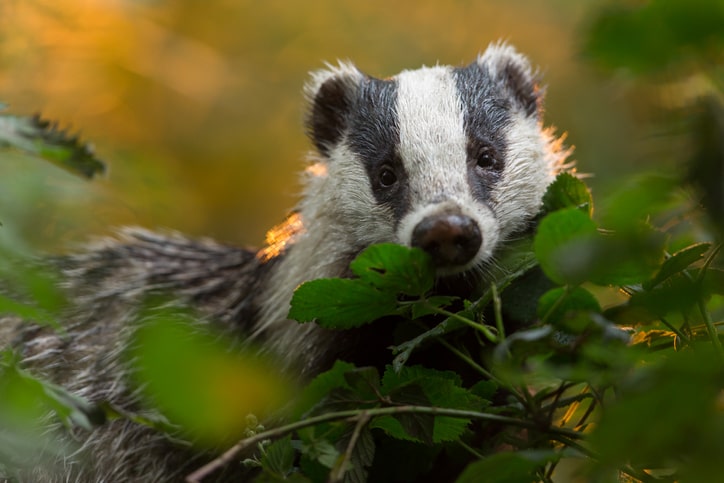
Scientific Name: Taxidea taxus
Habitat: Plains
Look out, rattlesnakes! The speedy digging badger is not only unafraid of you, he’ll happily eat you for dinner. Other creatures on a typical badger’s menu include pocket gophers, rabbits, insects, and anything else they can get their paws on. These scrappy, carnivorous burrowers can dig holes faster than humans and survive for 10-12 years in the wild.
Western Cottonmouth
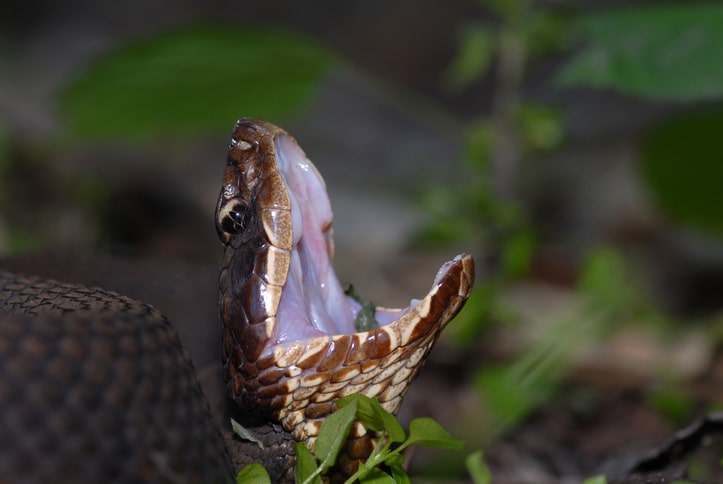
Scientific Name: Agkistrodon piscivorus leucostoma Habitat: Swamps, lakes, rivers, ditches
Also called water moccasins, cottonmouth snakes are easy to spot: They’ll hold their heads up out of the water when swimming, and when they open their mouths, their throats are blindingly white. They’re venomous, but the odds of getting bitten are low as long as you stay out of their way. They’d much rather go eat a fish.
Like other pit vipers, they give birth to live young instead of laying eggs. Baby cottonmouths should not be handled: They can bite just like grownups!
Western Diamondback Rattlesnake
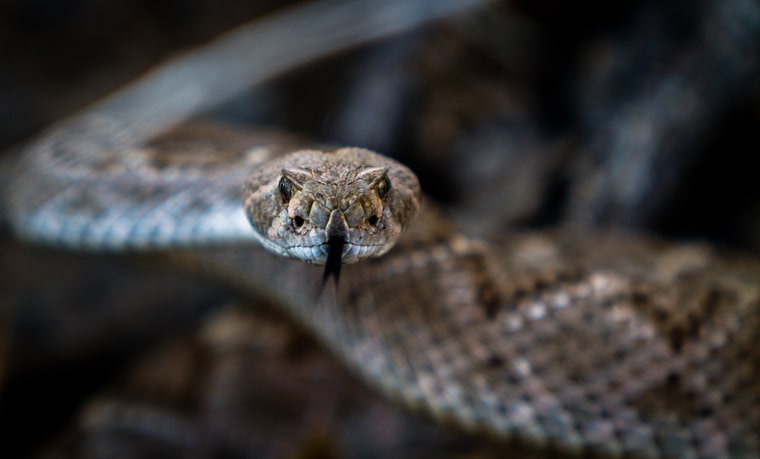
Scientific Name: Crotalus atrox Habitat: Varies (forests, hills, deserts)
Texas is home to at least nine species of rattlesnake, but the Western diamondback rattlesnake is one of the best known. They can grow up to six feet long.
Rattlers shed skin, or molt, as they grow, and each time they molt, a new segment of keratin–the same substance in human hair and fingernails–shows up on the tips of their tails. These keratin segments vibrate and make an infamous buzzing sound when a rattlesnake shakes its tail.
Unlike some other venomous snakes, Western diamondbacks are considered aggressive. They are more likely to rattle visitors and strike during a confrontation instead of slinking away.
Texas Banded Gecko
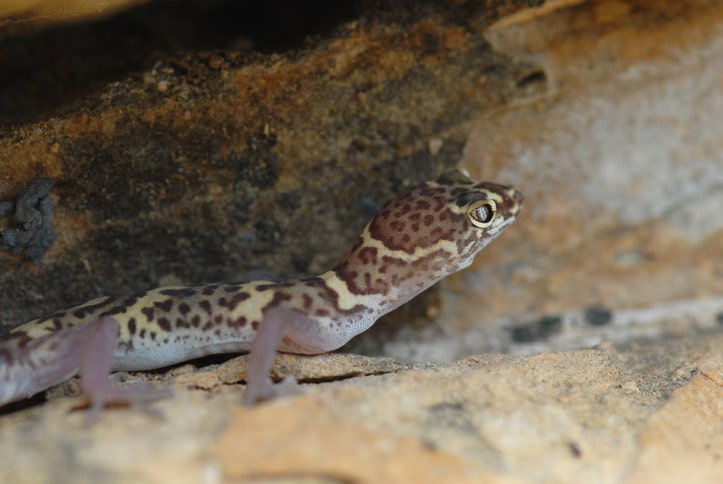
Scientific Name: Coleonyx brevis Habitat: Southwest Texas, rocky ground
Texas is so reptile friendly that not all the many lizard species found in the wild there are native, but the Texas banded gecko is! These colorful little lizards can easily fit in the palm of your hand. They are covered in pink or brown and yellow horizontal stripes. When threatened, they may squeak or try to imitate scorpions by lifting their tails and wiggling.
Texas Brown Tarantula
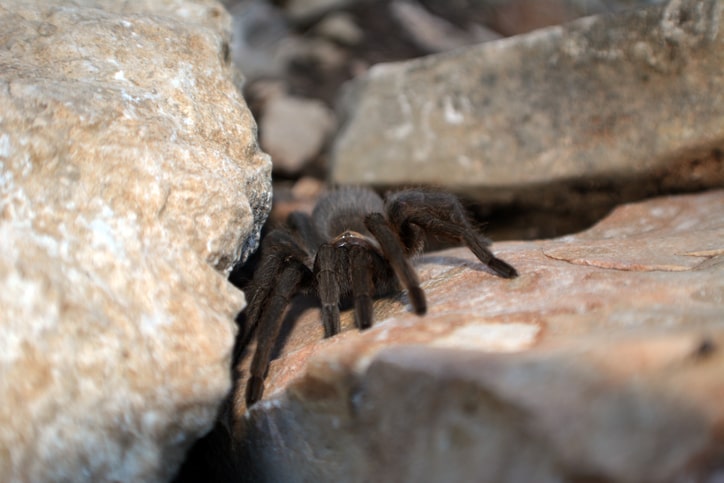
Scientific Name: Aphonopelma hentzi
Habitat: Grassland, rocky ground
The same bug-friendly weather and living conditions that attract reptile predators also make Texas extremely attractive to spiders. The Texas brown tarantula is one of the big ones. Females can lay a thousand eggs at a time, and the Texas brown’s leg span can grow to more than four inches.
Both black widows and brown recluses, the two North American spiders considered most dangerous to humans, also live in Texas.
What Animals Are Only Found in Texas?
The Guadalupe bass, Texas’ official state fish, lives only in Texas. It is a small-stream fish that prefers flowing water habitat.
Additionally, the reticulated gecko is a very small, threatened lizard species known for its brown-mottled pattern. It is only found in parts of two West Texas counties, Brewster and Presidio. The only other known wild reticulated gecko populations are located in northern Mexico.
What Is the State Animal of Texas?
Like other US states, Texas has official state symbols, including animals— eight of them, to be exact! Let's take a closer look at each of them.
State Bird: Northern Mockingbird

Scientific Name: Mimus polyglottos
Designated in 1927, the northern mockingbird was one of the first state birds to be chosen in the United States. Texans are said to have appreciated its loyalty, because it does not migrate during winter. Northern mockingbirds are known to be protective of their homes, another trait they share with many Texans!
Small State Mammal: Nine-Banded Armadillo

Scientific Name: Dasypus novemcinctus
Out of about 20 armadillo species worldwide, the nine-banded armadillo is the only one found in the United States. Its name is Spanish for “little armored one.”
While armadillos are famous for their distinctive habit of rolling into a tight ball for self-defense, only three-banded armadillos, which are found in Central and South America, are actually able to do this. Nine-banded armadillos are burrowing animals. They measure about two and a half feet long from nose to tail and weigh up to about 12 pounds when fully grown.
Armadillos are omnivores, feeding primarily on insects and other invertebrates. They occasionally eat fruits and other plant material, and will also consume small reptiles and even eggs if they get the opportunity.
Amazingly, armadillos can hold their breath underwater for up to six minutes. They live as long as 20 years in the wild.
Large State Mammal: Texas Longhorn

Scientific Name: Bos bos
With their iconic curved horns, Texas longhorn cattle are virtually synonymous with the Old West. They made the state’s list of official animals in 1995. Today’s longhorns carry spans as much as five feet or wider and are descended from Spanish cattle imported by Christopher Columbus in 1493.
State Flying Mammal: Mexican Free-Tailed Bat

Scientific Name: Tadarida brasiliensis
Mexican free-tailed bats are a pest controller’s dream! A single roost can be home to more than a million of them. Such large colonies can consume up to several hundred tons of insects overnight.
Baby Mexican free-tailed bats roost away from their mothers and must learn to find each other within the colony. Scientists think mother bats locate their babies by recognizing unique calls.
State Dog: Blue Lacy

Scientific Name: Canis lupus familiaris (i.e. the domestic dog)
Developed by four Kentucky brothers who settled in Marble Falls, Texas, the Blue Lacy was selectively bred from coyote, greyhound, and hunting dog stock to work cattle ranches. Also used for hunting, tracking, and rescues, these dogs carry a unique slate blue coat color gene.
The Texas Lacy Game Dog Association suggests that Old Yeller author Fred Gipson, who set his classic children’s books in Texas, may have been heavily influenced by the Blue Lacy breed. It became the state dog in 2005.
State Reptile: Texas Horned Lizard

Scientific Name: Phrynosoma cornutum
Go figure: the animal best known as a “horny toad” isn’t a toad at all! It’s not even an amphibian. It’s the Texas Horned Lizard, and it’s the official Texan state reptile. Despite their ferocious appearance and their terrifying habit of squirting blood from their eyes, Texas horned lizards are considered a threatened species today.
Harmless to people, Texas horned lizards, named for the spikes on their heads, naturally blend into sandy environments and can inflate their body size to appear larger. Their favorite food? Red harvester ants.
Other species of horned lizards living in Texas are the round-tailed horned lizard and the greater short-horned lizard.
State Insect: Monarch Butterfly

Scientific Name: Danaus plexippus
The monarch’s distinctive orange and black patterning has made it one of the most recognizable butterflies to North American children. Monarch caterpillars will only eat milkweed; adult monarchs consume nectar from a variety of flowers.
Unlike many other insects, monarchs migrate seasonally. Their summer range extends as far northward as southern Canada.
State Fish: Guadalupe Bass

Scientific Name: Micropterus treculii
Part of the smallmouth bass family, the Guadalupe bass hails from the Edwards Plateau, a geographic region connecting parts of central, south, and west Texas that includes the cities of San Antonio, San Angelo, and Austin. The Guadalupe bass is found only in Texas, according to Texas Parks and Wildlife.
State Dinosaur: Paluxysaurus

Scientific Name: Paluxysaurus jonesi (formerly Pleurocoelus)
Texas’s state dinosaur has already had a name change! Originally known as Pleurocoelus, the state sauropod was renamed Paluxysauraus jonesi in 2009. This happened after similar fossil specimens were discovered at a site known as the Twin Mountains formation in 1996. Twenty years later, a student named Peter Rose concluded that these bones belonged to a new species of dinosaur. Because the fossils were found at a place called the Jones Ranch by the Paluxy River, they were called Paluxysaurus, which means “Paluxy River lizard.”
To make things even more confusing, scientists now believe that tracks discovered near Paluxysaurus jonesi which were originally thought to have been left by Texas’ state dinosaur are actually from Sauroposeidon proteles, or “earthquake God lizard.” This sauropod was “70 feet long and 13 feet high at its hip, and it weighed 40 to 44 tons,” according to researchers at Dinosaur Valley State Park.
Texas Animals, Great and Small
America’s second-largest state is filled with unique habitats that support incredible wildlife growth and diversity. From prehistoric creatures to modern-day arthropods, there’s truth to the old saying: Everything is bigger in Texas!
River bottoms, grasslands, and desert ecosystems are just some of the many places Texan animals call home. Read more about the different kinds of animal habitats in Texas National Parks!
About the author







